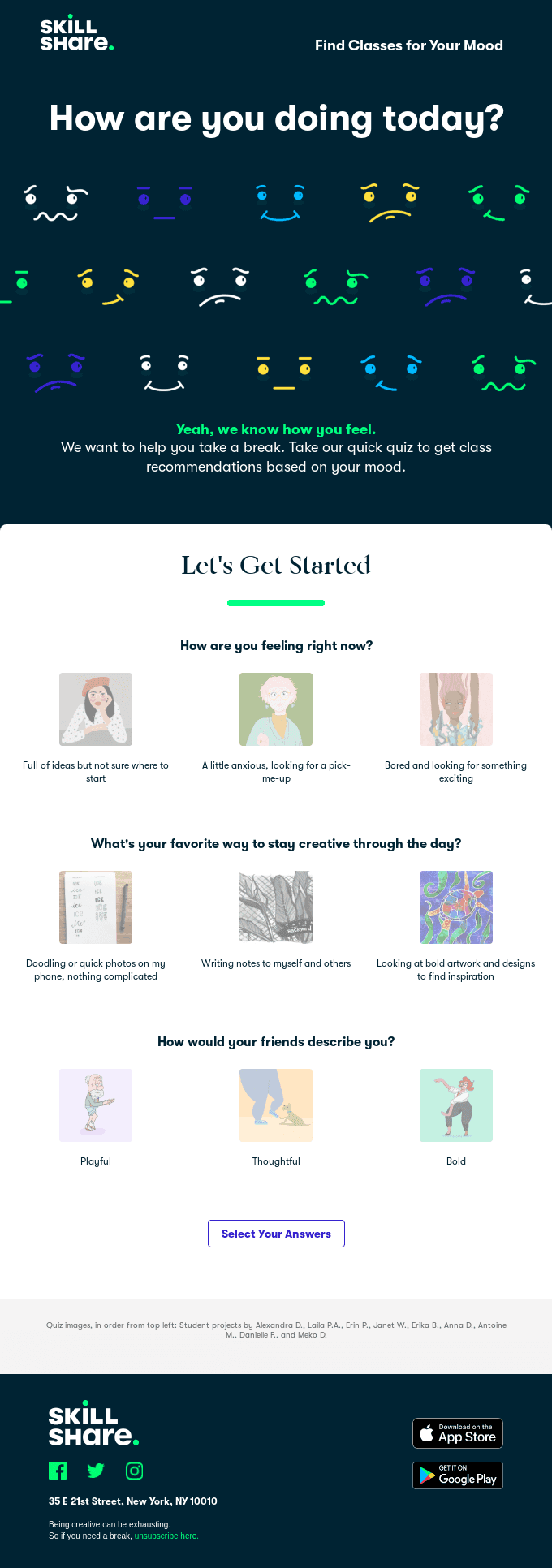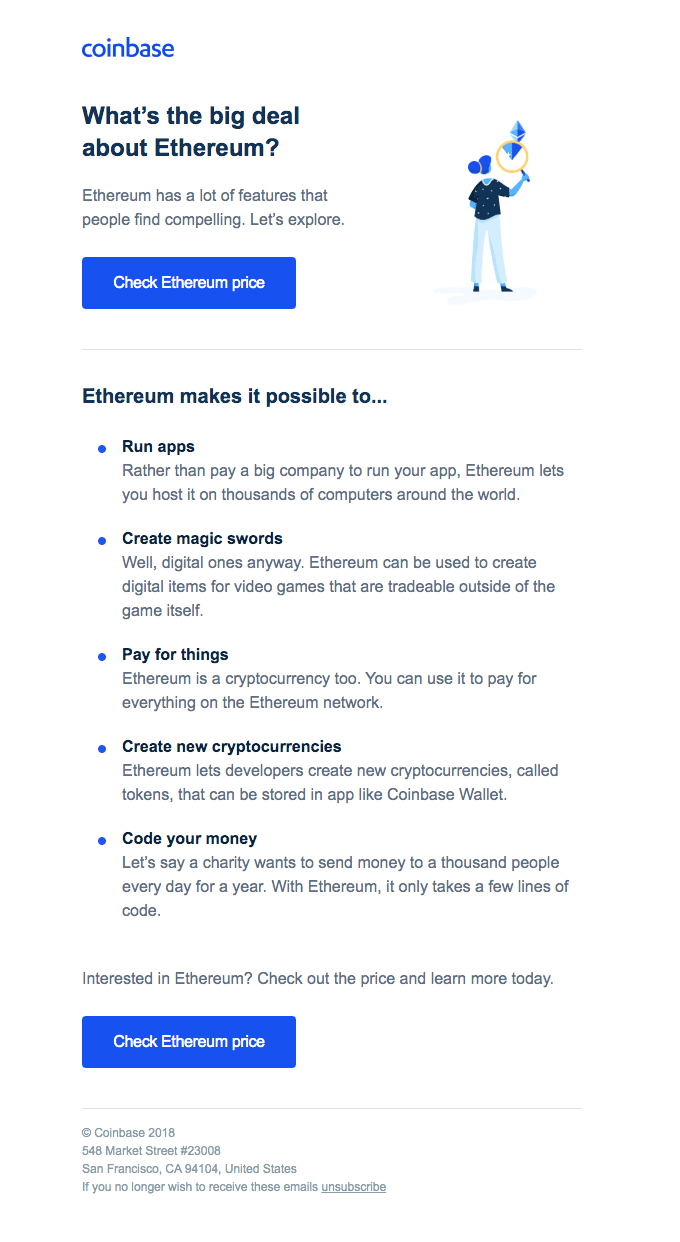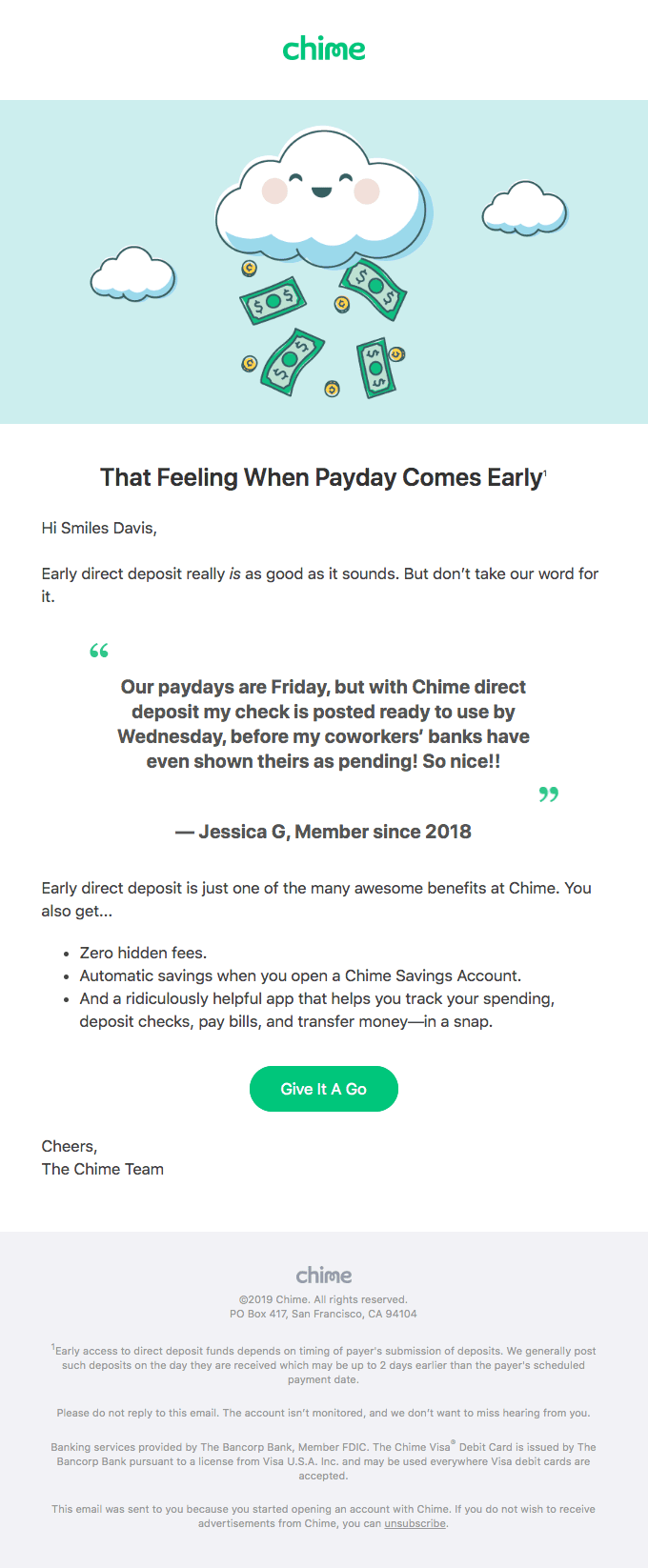Generating a new lead is hard and, in many industries, expensive. As a marketer, you need to do everything you can to convert as many leads as possible and, ideally, without further inflating your cost per acquisition.
A strong lead nurturing strategy does just that — helps drive conversions to drive growth, with organic or low-cost campaigns and activations.
In this article, we share:
Tips for effective lead nurturing
Before you start building your campaign, consider these best-practice tips.
1. Create segments of leads
No matter how long your list of leads is, it's unlikely they are all looking at your product for the same reasons and it's even less likely they are all in the same stage of the buyer's journey. They're different people — and the more you speak to them like different people, the more success you'll have.
Before considering messaging, consider how best to segment your leads. Some examples include:
Demographic and psychographic data including like seniority or title, indicated goal, or geographic location
Company information like industry, business size, or technographic data
Action taken like eBook downloaded or pricing page viewed
Intent using lead score or actions and behaviors that indicate intent
Lead stage including new lead, contacted, qualified, or ready to re-engage
Once you have these segments, you can identify which to focus on in your lead nurture strategy, and assess against your ICP to ensure alignment.
2. Make first-party data generation part of your strategy
When you start to think about your lead nurturing journey as a first-party data generation strategy, you can unlock opportunities to learn more about your leads to better personalize their journey.
One way to do this is with a data enrichment email. You can do this with a simple survey, or create an email with a question followed by a list of responses for them to click on. Each response can include a unique UTM parameter; so when a lead clicks on a response, their contact record is updated with what they’ve selected.
It's worth being transparent about why you're using this information — most customers want a personalized experience, and they are happy to hand over some information if they know they will get more relevant and useful messages as a result.
Beyond surveys and questionnaires, look at every action your lead takes as an important data point. Website page views, emails opened or clicked, SMS messages engaged with, pop-ups tapped — everything your lead does can tell you more about who they are and what they are interested in.
3. Personalize wherever possible
Segmentation will help you personalize your lead's journey, but if you can go beyond that step and add more elements of personalization, your messaging will be more relevant and memorable.
This can include things like individualized educational content or content recommendations, testimonials specific to their industry or circumstances, and product or service recommendations.
4. Create an omnichannel experience
Email is, without a doubt, an essential part of the lead nurturing process. But it’s not everything.Seeing a brand in different online environments can go a long way to cutting through the noise.
Taking an omnichannel approach to your lead nurturing strategy will go a long way. Try retargeting your leads on social media or search, using pop-up messages or offers when they visit your website, and using live chat or chatbots to reengage them at critical moments.
5. Don’t give up too soon, but do be diligent about list clean-ups
Whether it's an email playbook or an omnichannel journey, ensure you have enough content to keep nurturing that lead right through to conversion. It takes time to build a relationship with a lead and convince them that your platform, product, or service is the right one for them.
How much time will be dependent on your business type, pricing model, and contract terms, so be guided by the data, and if you don't have a lot to work with yet, it's better to create a longer nurture journey and let leads drop off naturally than risk shutting the conversation down just as a lead is heating up.
That said, inactive subscribers can damage your domain reputation and email deliverability. So you do need to be sure you are cleaning your list through a re-engage or sunset email journey.
6. Measure success
Ultimately, success will be determined by how many leads in your lead nurture journey actually become customers. But not every conversion will be directly attributable to the lead nurture journey — there are other factors, like sales calls and demos, that play a role along the way.
Aim to set up a dashboard with a number of key metrics like opens, click-throughs, conversations started, average lead score, and conversions. Keeping a close eye on these things will help you generate insights that will help you improve the experience.
6. Make it a team effort
If you have a sales team responsible for closing deals and a success team helping onboard those new customers, you will need to brief both teams on exactly how the lead nurutre journey works and — mostly importantly — the messaging and product positioning throughout.
Take this as an opportunity to gather feedback for improvements to give teams outside of marketing a sense of ownership, and ensure you have buy-in from senior leadership.
Doing this will ensure you have a seamless transition between the nurturing stage, the sales closing stage, and the all-important onboarding phase. This consistency will help ensure those hard-earned customers stick around, and perhaps even go on to become brand advocates.
Examples of lead nurturing
A great lead nurturing campaign will tell a cohesive story about who you are, and what you do, nudging leads further and further down the buyer's funnel to conversion. Here are some examples of how real brands nurture their leads in different ways:
1. How Snagajob welcomes leads
Most businesses are sending a welcome email to every new customer, but you'll want to welcome a new lead too — both because there's a living, breathing human behind that email address and because it can help ensure your emails continue to get delivered to their inbox.
It's simple, when a new lead shares their contact, they will be expecting this email, meaning it's more likely to be opened than almost any other non-transactional email you send. Plus, getting your brand top of the inbox while still top of mind is beneficial for creating a mental tattoo — the more frequently they see your brand in a short period of time, the more likely you are to stick.
There are many ways to go about your welcome email — share more information about your brand, ask about your new lead, or send an offer. The example from Snagajob below gives a new lead a quick summary of what they do, and how to get the most out of the platform.

2. Skillshare uses a quiz to generate first-party data
You've just met your new lead, it's the perfect time to learn more about who they are.
Whether you create a quiz, form, or a one-question survey, finding out more about why came to you and how you can help them can go a long way to ensuring the rest of your lead nurture series resonates with them. And, like your welcome email, they may be more inclined to open and respond in the early stages of your relationship than they would be down the track.
This quiz from Skillshare demonstrates how this can fun and simple for the new lead, while providing an opportunity to generate data and share more specific product recommendations.

3. How Coinbase educates leads
In industries like B2B, health, and finance, leads are generally looking to solve a problem or improve something. Your job is to convince that lead that your product, service, or platform is can solve their problem or benefit them more effectively than your competitors — but a hard sell straight off the bat isn't going to get you very far.
Instead, you can use your early lead nurture content to provide educational material on a relevant topic. This does a couple of things; first, it shows your new lead that your brand understands what they're experiencing and was built for people like them. Next, it positions your brand as an authoritative expert on the topic, helping to reinforce the idea that your business is the best solution out there.
The more you can personalize this the better, especially if you have a number of different ICPs or products.
In this example from Coinbase, the lead gets a clear, concise list of the benefits of Ethereum with a CTA to check out the price and learn more.

4. Banking app Chime provides social proof
When your lead is getting further down the funnel and they understand who you are, what you do, why you do it, and how you do it, it's appropriate to get more direct about why you're the best.
Social proof is a great way to do that. Like everything, it's best if it is personalized to include a quote or review from someone who is in the same industry or situation as your lead. This may not always be possible, or even necessary, but the more your lead feels as though the testimonial comes from someone like them, the more likely they are to sit up and take notice.
In this example from banking app Chime, a member quote is heroed alongside some bullet points about the app's benefits. It's a straightforward email with a clear CTA and one that will help sort the real leads from the tire kickers.

Email images sourced from reallygoodemails.com
Lead nurturing FAQs
1. What is lead nurturing?
Lead Nurturing is a strategy that helps guide leads who enter the funnel, whether through marketing, sales, or self-discovery, to become customers. Whether lead nurturing through email, social media, retargeting, or even sales intervention, the idea is to deliver a remarkable omnichannel experience that results in more conversions.
2. What are the benefits of a lead nurture campaign?
Lead leakage is inevitable to some degree, but a strong lead nurturing campaign will go a long way to ensure that real leads who are looking for a solution like your business offers fully understand your point of difference and have ample opportunity to become a customer.
With sky-high, and still climbing, customer acquisition costs (CAC) across almost every industry, leads are more valuable than ever before — if you're not working to convert them with a nurture journey, you're potentially leaving money on the table and driving your average CAC up.
Finally, the data generated from a lead nurture campaign can teach you more about who your leads are, the messaging they are most likely to respond to, and how you can improve your buyer's experience.
3. How long should a lead nurture campaign be?
How long is a piece of string?
Seriously though, that's going to depend on how long your sales cycle is, how your lead enters the funnel, when a salesperson gets involved, and how engaging your emails are.
A lead nurture campaign is typically a long-term play, so aim for at least a few weeks. Longer sales cycles, like in B2B, should aim for a few months' worth of campaign content. In either case, you should set your journey up so that unengaged audience members are removed as this will help protect your email deliverability.
4. How can I use AB testing in lead nurture campaigns?
AB testing is a great idea — it can help you better understand the type of content that resonates with your leads, and optimize the journey. That said, the data can become cloudy when you are dealing with a long nurture series, and assessing the performance of a single subject line or even a single email. A nurture campaign should build on itself to tell a story, so it's a little like asking an audience to read a single chapter of a book rather than assessing the novel as a whole.
Because of this, AB testing is often most helpful after you have some initial data to go off. Let's say you're seeing a larger-than-average number of unsubscribes on a specific email. You could test changing the content or subject line of that email specifically, or placing it in a different stage of the journey (e.g. maybe you have a hard-sell email too early on) to see which version of the email or journey performs best.
The final word
Without lead nurturing, you're leaving money on the floor. Buying cycles, especially for higher-priced items or products that require an annual commitment, can be on the long side, and staying top-of-mind while your lead makes a decision is critical to edging out the competitor.



